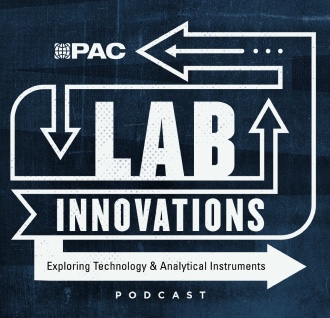Nov-2024
Circular syngas with biomass and plastic waste gasification
Solid and liquid gasification has the potential to unlock and convert advantaged feeds into high-value, bio-based and circular fuels, chemicals, and plastics.
Harold Boerrigter and Sven Felske
Shell Catalysts & Technologies
Viewed : 2647
Article Summary
As the energy transition gathers pace, more and more refiners and chemical manufacturers are evaluating the benefits of upgrading existing gasification units to produce lower-carbon and more circular products.
Gasification of hydrocarbon feedstocks to generate syngas and related products is a well-established process. However, with new advancements in pre-conversion technologies – capable of processing more complex materials like mixed plastics, biomass, and unsorted waste streams – gasification has the potential to become a key technology for producing lower-carbon synthetic biofuels and enhancing plastic circularity.
Crucially, revamping gasification units to accept pre-converted biomass and waste streams can be done quickly and cost-effectively.
Energy transition: The case for change
The United Nations Framework Convention on Climate Change’s (UNFCCC) recent stocktake on global climate action made it clear that the world is behind where it needs to be in efforts to mitigate the impacts of climate change. Indeed, recent estimates suggest that the global carbon budget to limit global warming to 1.5°C has shrunk to just 275 MtCO₂ – less than seven years of carbon emissions at current rates.
With fossil-based transport fuels contributing about 20% of global carbon dioxide (CO₂) emissions, there is a growing imperative to switch to lower- and zero-carbon fuels. For example, the EU’s ReFuelEU aviation initiative mandates a progressive increase in the use of sustainable aviation fuels (SAF) and synthetic aviation fuels. By 2035, aviation fuel supplied at EU airports must contain at least 20% SAF – a 900% increase compared to 2025 requirements.
At the same time, the world has a growing waste problem, generating more than 2 billion tonnes of solid waste annually – a total expected to grow by more than 80% by 2050. In particular, plastic waste makes up as much as 12% of global solid waste, the majority of which ends up in landfill or incineration, or is mismanaged.
Indeed, less than 10% of global plastic waste is recycled each year, leading to greater efforts to increase recycling rates and plastic circularity. For example, the EU has introduced a ban on member states exporting hazardous or hard-to-recycle plastic to non-OECD countries. It has also set stringent waste-reduction targets, which include increasing its plastic recycling rate to 55% by 2030 and sending less than 10% of municipal solid waste (MSW) to landfill by 2030.
The gasification opportunity
Gasification is an established process – one that Shell has been pioneering for almost 70 years by combining continual research with real-world learnings from gasification projects around the world.
Today, thanks to new pre-conversion technologies developed by Shell and its strategic partners, gasification can convert a wide range of low-value, mixed municipal, biomass, and unsorted plastic waste and residues into a valuable syngas. Syngas is a versatile intermediate feedstock that can be used instead of virgin hydrocarbons to produce fuels, electricity, chemicals, and plastic (see Figure 1).
Crucially, adapting production sites with existing gasification units to process low-value mixed municipal, biomass, or unsorted plastic waste is an efficient and cost-effective approach (compared to greenfield projects) that provides companies with two key opportunities.
First, they can leverage low-value biomass waste, such as sustainable wood residues from industrial biomass processes, to produce low-carbon, bio-based fuels with significant margins. Doing so can help reduce the carbon footprint and circularity of operations and products. Second, operators can produce high-value, circular plastic by leveraging the growing supply of low-value plastic waste.
Pre-conversion of waste for gasification
Pre-conversion is a key process that can convert a diverse range of materials (such as unsorted plastic waste and biomass) into intermediate feedstocks for gasification units. Shell has developed a range of pre-conversion technologies that offer operators flexibility to use waste feeds that best suit their circumstances: liquefaction for bulk plastic waste, fast pyrolysis for woody biomass, and torrefaction for biomass and agricultural residues (see Figure 2).
Plastic liquefaction for bulk plastic waste
Today, as much as 85% of plastic waste is sent to landfill, incineration, or left unmanaged, largely because current methods, including mechanical recycling and chemical recycling by pyrolysis, require well-sorted, high-purity plastic waste streams, which are costly and resource-intensive to create.
Plastic liquefaction, however, can take plastic waste unsuitable for other recycling methods and pre-convert it into gasification feedstock to produce syngas that is equivalent to virgin feedstock (see Figure 3).
Importantly, when used alongside existing plastic recycling methods, plastic liquefaction has the potential to play an important role in helping to close the plastic circularity loop. So, how does plastic liquefaction work?
The plastic liquefaction technology, developed as part of a strategic collaboration with Hyundai, features a novel liquefaction unit that can be installed immediately upstream of an existing gasifier (see Figure 4). With no additional units required, deployment is quick and can be done with relatively little cost. See the Feasibility study overleaf for an example of how a European refiner has evaluated switching to waste gasification to produce high-value circular chemicals.
A key consideration is the characteristics of plastic-derived gasification feedstock produced by liquefaction, which differ slightly from fossil-based feeds. For example, Table 1 highlights differences in sulphur, halides, ash, and ash behaviour. While these differences are important, they can be managed with only minor adjustments to an existing gasifier and connected equipment. For example:
· Reconfiguration of upstream feedstock system to deal with different fouling and cracking behaviour.
· Change refractory material to withstand fluctuating slag composition.
· Addition of slag removal system (proven system used in goal gasification).
· Upgrade materials based on expected chloride levels.
· Simplify wastewater and sour gas treatment (plastic waste is relatively poor in sulphur).
Fast pyrolysis for woody biomass
Fast pyrolysis converts woody biomass, such as waste wood from industrial processes, into pyrolysis oil suitable for gasification (see Figure 5a). As part of the integrated Shell biomass gasification process, fast pyrolysis can be deployed in existing liquid/residue gasifiers with only minor adaptions to the feed system. Moreover, because fast pyrolysis is relatively simple and quick to deploy, it can contribute to a faster reduction in carbon intensity and the production of low-carbon products when used with existing gasifiers.
Sponsor:
Add your rating:
Current Rating: 4

















